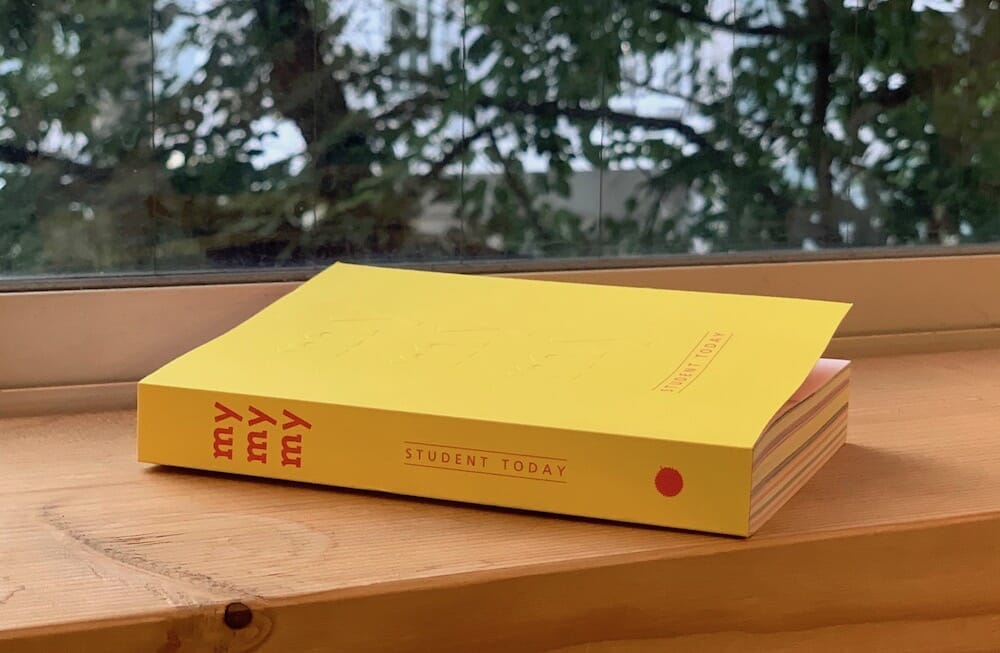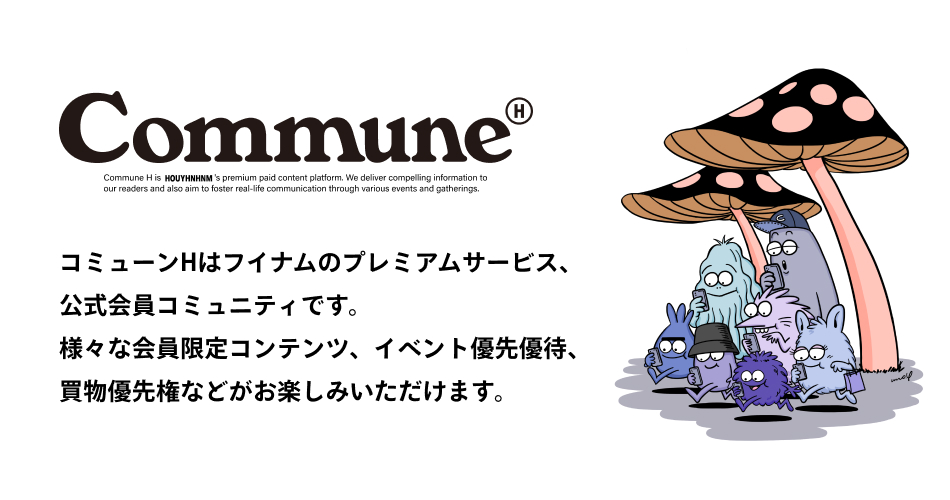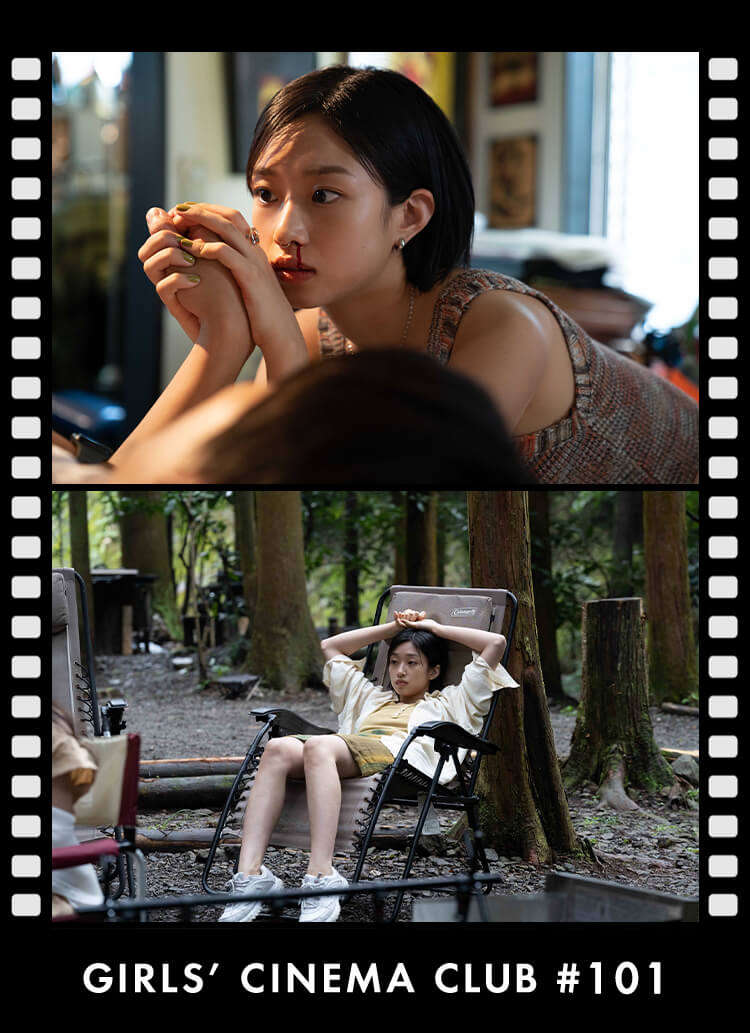Recently, sustainable practices in the fashion industry have been on the rise, with the three major convenience store chains starting to charge for plastic bags on Wednesday, July 1, making us more environmentally conscious even in the most mundane of activities.
At such a time, a student sent a book and a passionate message to the HOUYHNHNM's editorial office. Here it is.
my my my -STUDENT TODAY- Not for sale
This book is a university pamphlet called "my my my", created by current students of Kyoto University of Art over a period of about a year. It is delivered to high school students throughout Japan who have requested information materials and distributed at open campuses, thus capturing in one volume the atmosphere of what university life is like for high school students who wish to enroll.
While it is unusual for students to make this pamphlet, the real highlight of this pamphlet is the theme, which changes every year. In the past, they have dealt with pens, socks, and masking tape, but "Let's make a pamphlet that can only be made this year!" and this year's edition focuses on plastic straws.
In "my ROOM," we created an illustration of a room where a current college student lives alone for high school students who are away from their parents. If you look closely, you will find a straw.
The reason why we chose this theme is because we were uncomfortable with the fact that only plastic straws are treated as the bad guys in the environmental issues being discussed. This pamphlet was produced with the aim of creating a pamphlet that could only be created from the perspective of students, who have many opportunities to come into contact with straws, such as those used for paper-packaged juices.
Although the straw issue is addressed with a friendly tension, it is also somewhat amusing to see the adult help, such as asking questions on line to the professor and going to Sibase, the largest domestic straw manufacturer, for an interview. It is often said that art raises issues and design solves problems, but mixing straws and environmental issues into a college brochure is that of art.
In "my WINK," a collection of snapshots of students. Here, too, if you look closely, you can see straws.
Don't worry, though, the entire chapter doesn't just focus on plastic straws; it also covers student life, of course, including a month's schedule, complaints about the university, and asking parents why they paid for tuition.
Mizuki Hirai, a student at Kyoto University of Arts, sent us this book. Since only high school students can get a copy, we did a little e-mail interview with her about her intentions.
First, please introduce yourself.
I am a member of the Fashion Design course in the Department of Spatial Design, majoring in jewelry. For my assignments, I am learning to create with my hands, such as handling cloth and silver, as well as graphic design using a PC. Outside of the department, I have completed two years of activities as a member of the production team for the university pamphlet "my my my." This year, I am planning and designing a handbook to be distributed to job-hunting students on campus as a member of the production team.
my STRAW HAT" was born from the Japanese word for straw, which is straw, and the English word for straw hat, which is a straw hat.
Why did you decide to send this brochure?
In dealing with plastic straws and environmental issues, I was more than a little anxious and nervous about overriding public opinion. However, I felt that if I kept silent, I would not be able to communicate anything, and that if I did not, I would live indifferently, thinking that it was someone else's problem. When I completed the pamphlet, I felt a sense of accomplishment and at the same time a strong desire for more people, not just high school students, to know about and face up to this theme. For this reason, I wanted to send this pamphlet to somehow transmit my thoughts and feelings to society and the world.
Why did you choose "HOUYHNHNM's"?
I felt it was cool not to worry too much about what others think and to "communicate". To give you an example, the catch copy of the magazine "Finam Unplugged," which went on sale in March of this year, "Let's do what we shouldn't do. I found this catchphrase very appealing. Especially, the p. 38
Let's open up a little window of opportunity in a world that is currently suffocating with self-imposed restrictions for fear of flames." (Omitted)I was very impressed by his words. I sympathized with his rebellious spirit and thought that a slightly Yankee theme such as "Straws are not bad! I thought that a slightly Yankee theme such as "Straws are not bad!
It seems that "my my my" is aimed at high school students who are considering enrolling in school.
I got it when I was in high school, and the impact it had on me at the time was truly amazing. Not only were the visuals cute, but the text was cool, the content interesting, and the design made me want to read it over and over again. Moreover, the fact that these were made by students was very appealing to me. When I saw this pamphlet, I thought, "We have to make it! We have to make it! I'm going to work hard during the rest of my high school life to make it happen!" and I have hope that I will go to Kyoto University of Art in order to make "my my my". I loved reading it on the train on my way to school and during my morning reading time, so the pamphlet was in tatters.... I was so happy that I could be cool by being with him all the time, and he became like a good-luck charm.
In the "1000 Q&A" survey of 1,000 students, a pie chart is represented by a plastic straw.
Were there any difficulties during production?
Every content in the pamphlet incorporates a straw motif in the design. It was difficult to know how to incorporate it and how to convey the content to high school students. Including large and small ideas, I think we came up with over 500 ideas and went over them again and again. I wrote the opening sentence, and I had a lot of trouble figuring out how to convey the serious problem of plastic straws to high school students in a way that was approachable and easy to understand.
In "my STRAW," a search for alternatives to plastic straws, there are surreal photos of chikuwa and other items.
Did you have any thoughts about plastic straws after the production?
During the production process, I lived with plastic straws almost every day, so when I first finished the work, the stripes on the buildings and the spiral staircase looked like straws. I became so familiar with the straws that when they were served at cafes and coffee shops, I would say, "Oh, wow! I felt so strongly that I didn't want them to disappear. Of course, I still use them! However, as I researched various straws, my seniors and classmates gave me straws made of glass, stainless steel, bamboo, and straw, so I began to choose straws according to the drink and my feelings at the time.
Finally, if you have something to say to the world, please do.
Please take good care of "MY". MY" is to make your own decisions, make your own mistakes, and think for yourself. I think the reason why you made straws look bad is because there are too many people who don't think for themselves = don't value "MY".
my my my -STUDENT TODAY- 2020
www.kyoto-art.ac.jp
Art direction, design = CHIMASKI
chimaskidesign.com/










